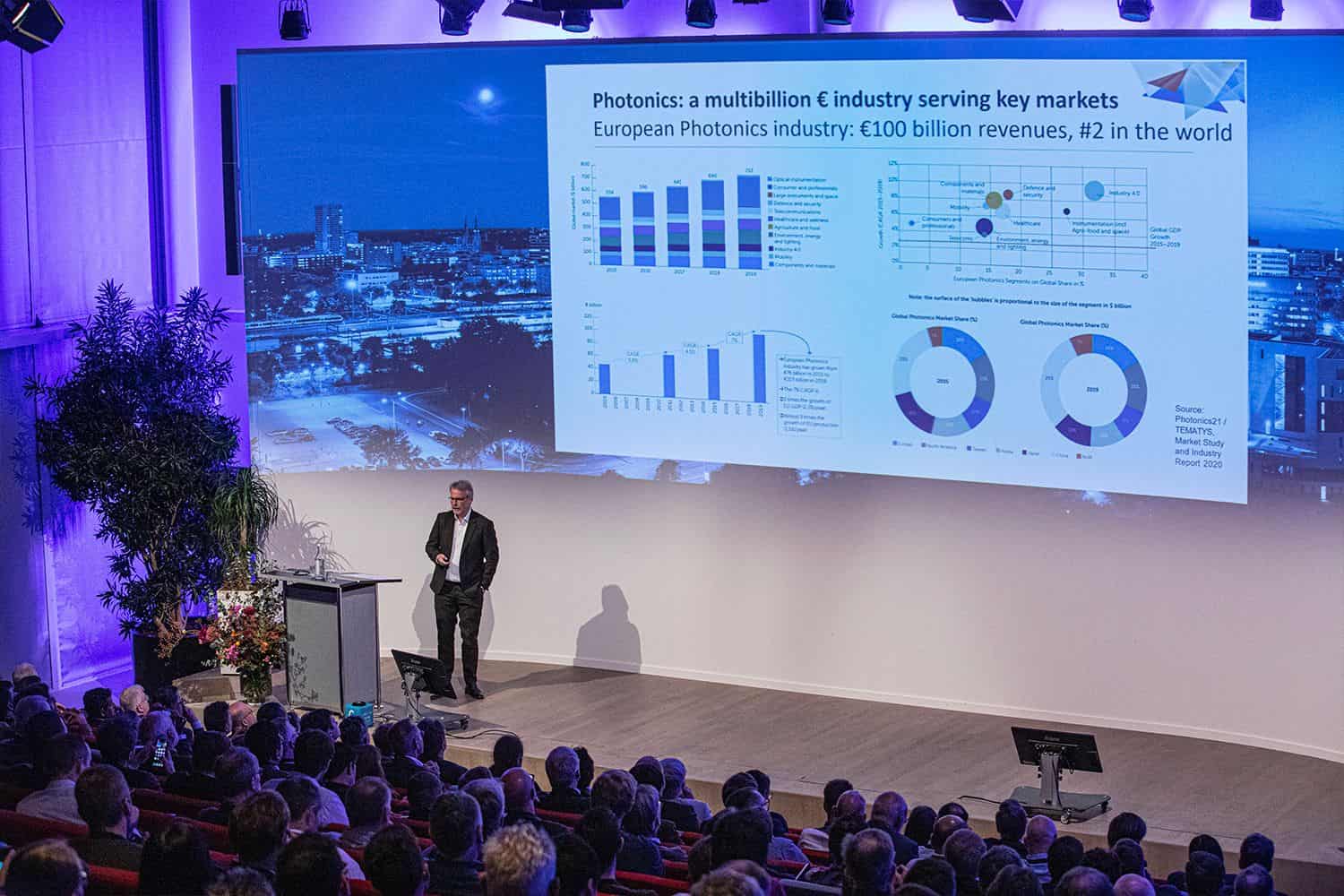
“The European Union will fail to advance towards digital strategic autonomy if it is not at the forefront of technological innovation and manufacturing resilience in both electronic and photonic chips.” CEO Prof. Dr. Gabriel Crean of Luxemburg-based Lux Consulting Group, thinks the new European Chips Act is not enough to cover the needs of the photonics industry. “Photonic chips cannot be a simple ‘add-on’ to the EU Chips Act.”
According to Prof. Crean, who was talking at the PIC Summit Europe 2022, held in Eindhoven on November 7 and 8, actions must be overlapping and reinforcing. “In other words, they need to be holistic, which means they will be addressing manufacturing capacity, a level playing field, trade restrictions, innovation, and support for training and education.” On top of that, in order to achieve the European digital ambitions, speed is essential: “That’s why I ring the alarm bell now. We have to move fast.”
Prof. Crean warned his audience that the biggest mistake for now would be to underestimate the changes the world has recently gone through. “This change is irrevocable. Covid, Russia’s war, the tensions between China and the U.S., all have resulted in systemic impacts on energy, supply chains, investments. The EU economy faces unprecedented challenges.”

Industrial policy
One of the ways to counter this situation is, according to Prof. Crean, by implementing a European industrial policy and an economic resilience and capacity strategy. “The European Union is now at a pivotal point in its ambition for digital resilience. Think of cloud computing, cybersecurity, quantum computers. It is clear that the EU will fail to advance towards digital strategic autonomy if it is not at the forefront of technological innovation and emerging digital technologies.” This asks for strategic autonomy in at least two identified technologies, he adds: microelectronics integrated circuits and photonic integrated circuits.
With a current global share of 12 percent in InP manufacturing (as opposed to 35 percent for China and 53 percent for the U.S.), this is not a done deal for Europe. In silicon photonics, the situation is even worse: the U.S. industry controls 93 percent of global market share. Prof. Crean thinks this could even get worse if you look at the consequences of the U.S.-imposed trade limitations for European chips and chip machine manufacturers in their relations with China. And to make things even worse, there’s the complete lack of level playing field. “Selling our products to China is practically impossible right now, and not only because of these American trade restrictions. If you look at the tax advantages for Chinese companies, there’s no way we can compete with them. We need to sit down with governments and EU authorities to get this level playing field.”
“Not an add-on”
Crean’s warnings were directly addressed at the European Commission. Colette Maloney, the Commission’s Head of Microelectronics and Photonics, answered them with a broader look at the context of the Chips Act, focusing on pilot lines for photonic chips. “But first of all: rest assured that photonics is an integral part of the Chips Act, not an add-on of some sort.”
According to mrs. Maloney, the EU has five main objectives with the Chips Act, all focused at creating a ‘state-of-the-art’ European semiconductor ecosystem. “It’s about strengthening our research and technology leadership, reinforcing our capacity to innovate, substantially increasing our production capacity, addressing the acute skills shortage by attracting new talent, and developing an-in-depth understanding of global semiconductor supply chains.”
Mrs. Maloney says the European Chips Act and the ‘Chips for Europe Initiative’ will bridge the gap between lab and fab. “We will build a virtual platform to reinforce Europe’s semiconductor design capacity, enhance existing and developing new pilot lines, build advanced technology and engineer capacities for accelerating the development of quantum chips. Also, we will create a network of competence centres across Europe, and establish a Chips Fund to facilitate access to loans and equity by start-ups, scale-ups and SMEs and other companies in the semiconductor value chain.
Of course, Maloney is aware that all these objectives depend on investments. She says the EU is preparing loans and equity schemes, through EIB and EIC. “On top of that, I want to invite the whole value chain to participate in the workshops we are organizing.”
PIC Summit Europe 2022 is a new congress, one of two photonic chip conferences in Europe and will return annually. It is expected to take place again next year in November. PhotonDelta is the lead organizer of the congress; the program was set up together with the Eindhoven University of Technology and IPSR-I.

